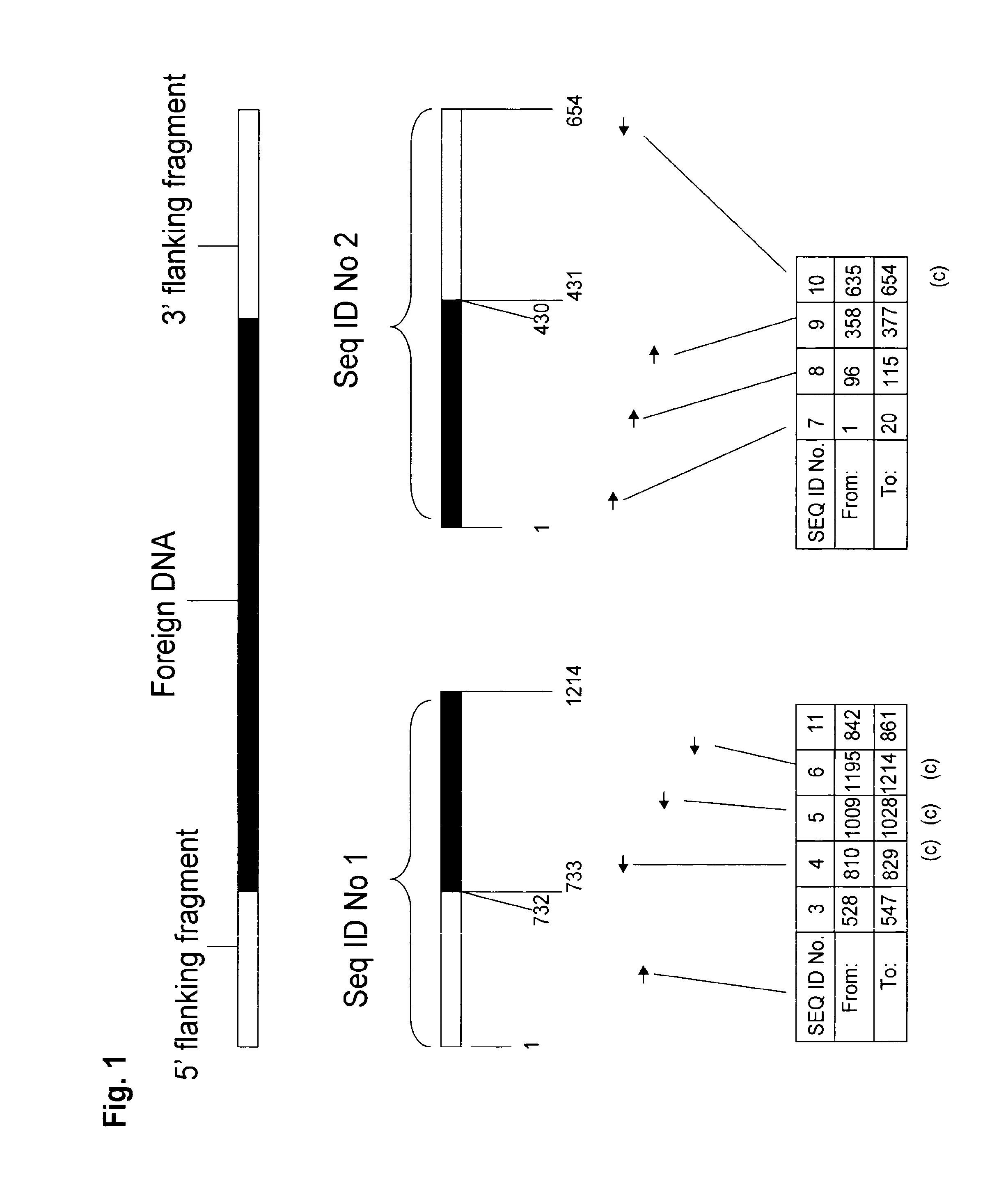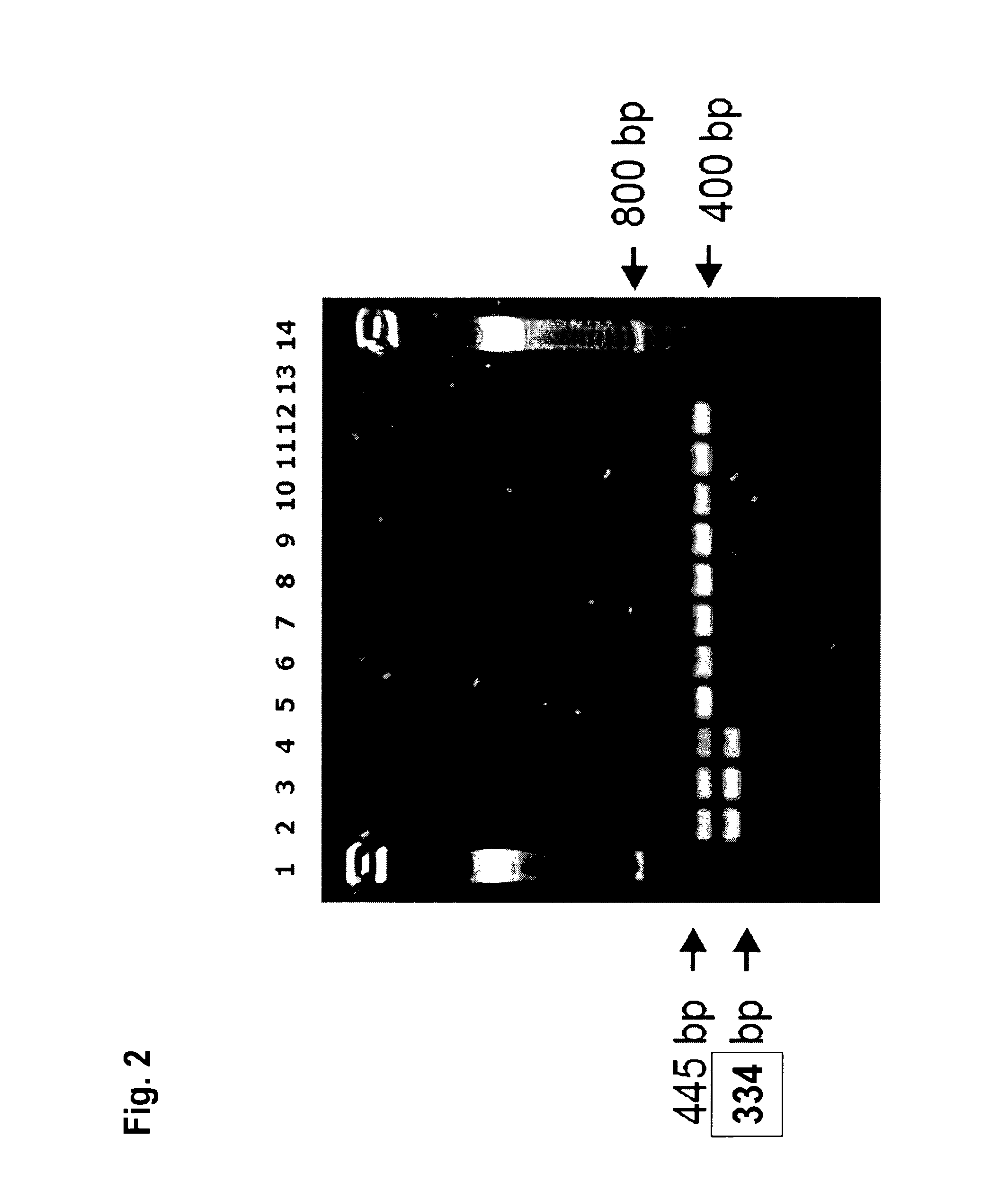Herbicide tolerant cotton plants and methods for identifying same
a technology of herbicide-tolerant cotton and cotton plants, which is applied in the field of transgenic cotton plants, can solve the problems of time-consuming, potentially damaging to the crop, and not always possible, and achieve the effect of superior agronomic phenotyp
- Summary
- Abstract
- Description
- Claims
- Application Information
AI Technical Summary
Benefits of technology
Problems solved by technology
Method used
Image
Examples
examples
[0289]1. Identification of Elite Event EE-GH3
[0290]Herbicide-resistant cotton was developed by transformation of cotton with a vector comprising the coding sequence of a modified epsps gene encoding a glyphosate tolerant EPSPS enzyme, under the control of a promoter of a histone gene as described in U.S. Pat. No. 5,491,288 or U.S. Pat. No. 5,792,930.
[0291]Elite event EE-GH3 was selected based on an extensive selection procedure based on good expression and stability of the herbicide resistance gene and its compatibility with optimal agronomic characteristics such as plant height, height to node, boll retention, stand, vigor, fiber length, fiber strength and lint yield were evaluated.
[0292]The selected event was introduced into different commercial genetic backgrounds, and results of field trials on different locations were compared. Plants were sprayed with the herbicide using different treatments.
[0293]No visible damage as a result of herbicide application was ever observed after a...
PUM
 Login to View More
Login to View More Abstract
Description
Claims
Application Information
 Login to View More
Login to View More - R&D
- Intellectual Property
- Life Sciences
- Materials
- Tech Scout
- Unparalleled Data Quality
- Higher Quality Content
- 60% Fewer Hallucinations
Browse by: Latest US Patents, China's latest patents, Technical Efficacy Thesaurus, Application Domain, Technology Topic, Popular Technical Reports.
© 2025 PatSnap. All rights reserved.Legal|Privacy policy|Modern Slavery Act Transparency Statement|Sitemap|About US| Contact US: help@patsnap.com



